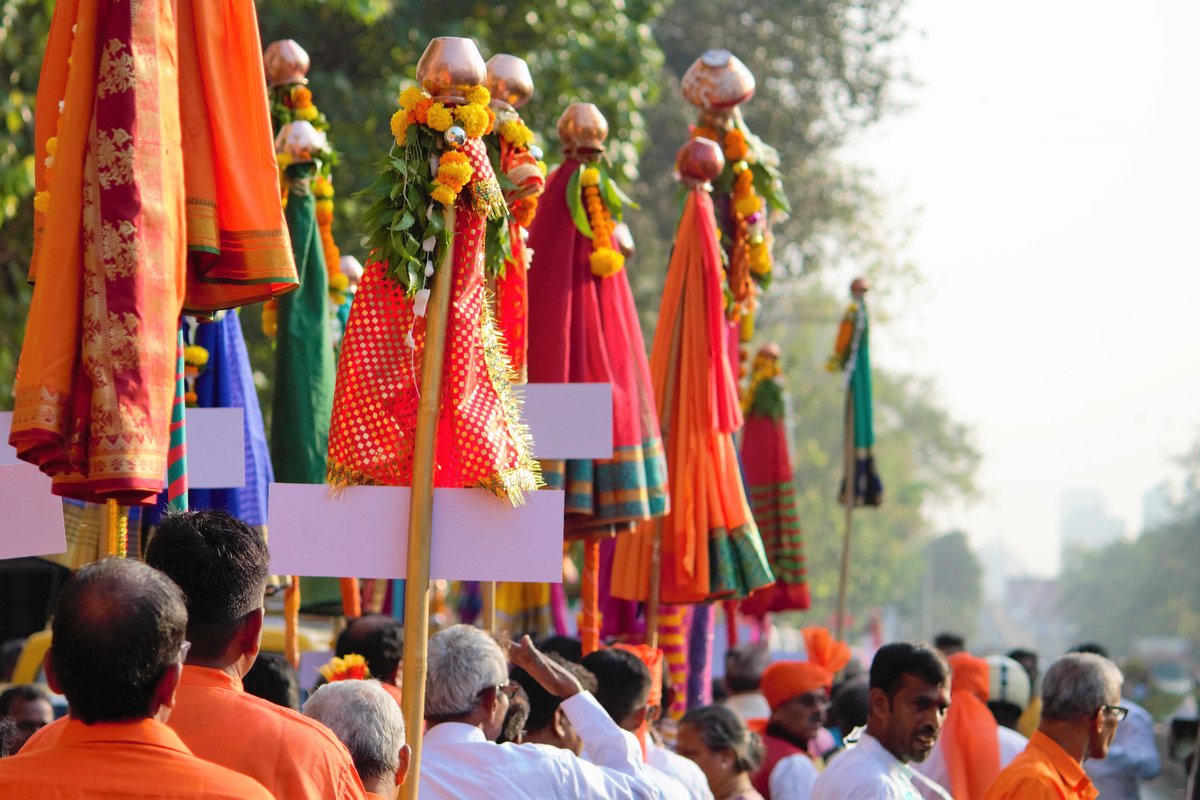Maharashtrians and Konkanis will celebrate Gudi Padwa, also known as Samvatsar Padvo, on Sunday, March 30, 2025. This festival marks the beginning of the traditional Marathi New Year and a new Samvatsara, a 60-year cycle in the Hindu lunar calendar, with each year having a unique name.
Gudi Padwa and Chaitra Navratri
Gudi Padwa also marks the start of Chaitra Navratri, a nine-day festival dedicated to worshipping Maa Durga’s nine forms. People across Maharashtra follow age-old traditions during these nine days. The festival coincides with Ugadi, which the people of Andhra Pradesh and Karnataka observe.
Date and Time for Gudi Padwa 2025
In 2025, Gudi Padwa falls on March 30. The Pratipada Tithi begins on March 29 at 4:27 PM and ends on March 30 at 12:49 PM.
The Significance of Gudi Padwa
The festival follows the Luni-Solar calendar, which considers both the Sun and Moon’s positions to determine dates. In contrast, the Solar calendar bases its calculations only on the Sun’s movement. These differences lead to the Hindu New Year being celebrated twice annually under different names. People in Assam celebrate Bihu, Tamil Nadu observes Puthandu, Odisha marks Pana Sankranti, Punjab welcomes Vaisakhi, and West Bengal celebrates Naba Barsha.
One of the main traditions of Gudi Padwa involves hoisting the ‘Gudi,’ a decorated flag symbolizing victory and prosperity. People adorn the Gudi with a garlanded sugar crystal, neem and mango leaves, and a vibrant cloth. They place an inverted copper or silver pot on top of the Gudi and display it at their house entrance to mark the triumph of good over evil.
Rituals and Traditions
The festival begins with prayers and a ceremonial oil bath. Hindu scriptures emphasize the importance of an oil bath and the consumption of neem leaves to boost immunity and cleanse the body. In North India, people consume neem with ‘mishri’ and begin the nine-day Chaitra Navratri Puja instead of celebrating Gudi Padwa.
The History Behind Gudi Padwa
According to Hindu mythology, Lord Brahma created the universe on this auspicious day. This occasion marks the beginning of the traditional Marathi months, and the Panchang considers this day highly significant.
Another legend associates Gudi Padwa with Lord Shri Ram’s return to Ayodhya after defeating Ravana. People welcomed him by hoisting the Gudi, symbolizing victory.
Additionally, Emperor Shalivahan is believed to have defeated the Huns and established his rule on this day, marking the beginning of the Shalivahan Saka era. The victory occurred on Chaitra Shuddha Pratipada, which coincides with Gudi Padwa.
Gudi Padwa remains a festival of joy, victory, and new beginnings. It unites families in celebration and strengthens cultural traditions, making it one of the most significant festivals in Maharashtra and the Konkan region.


